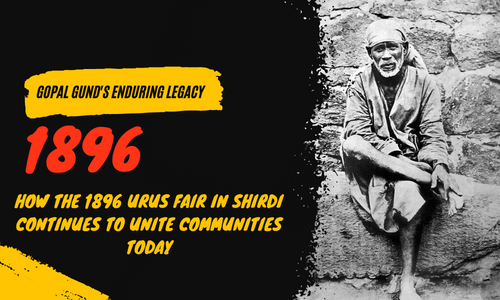In 1896, a man named Gopal Gund started the Urus fair in Shirdi, India. The fair was held annually in honor of the Muslim saint, Pir Haji Ali Shah Bukhari, and it soon became a major event in the town.
Shirdi was a small village in Maharashtra at the time, and the fair was initially a small-scale event. However, as word of the fair spread, it began to attract people from all over the region.
The fair was held for three days every year and included a variety of activities and attractions. There were stalls selling food, clothing, and other goods, as well as carnival games and rides. Performances of music, dance, and theater were also a popular feature of the fair.
One of the main attractions of the Urus fair was the procession that took place on the final day. The procession included a chariot carrying a statue of Pir Haji Ali Shah Bukhari, as well as musicians and dancers. The procession would wind its way through the streets of Shirdi, with devotees following behind.
The Urus fair became an important event not only for Muslims but also for people of all religions. It was a symbol of the communal harmony that existed in Shirdi, where people of different faiths lived and worked together in peace.
Today, the Urus fair is still held in Shirdi every year, and it continues to be a major attraction for visitors from all over India and beyond. It is a testament to the enduring legacy of Gopal Gund and the spirit of unity that he helped to foster in Shirdi.
